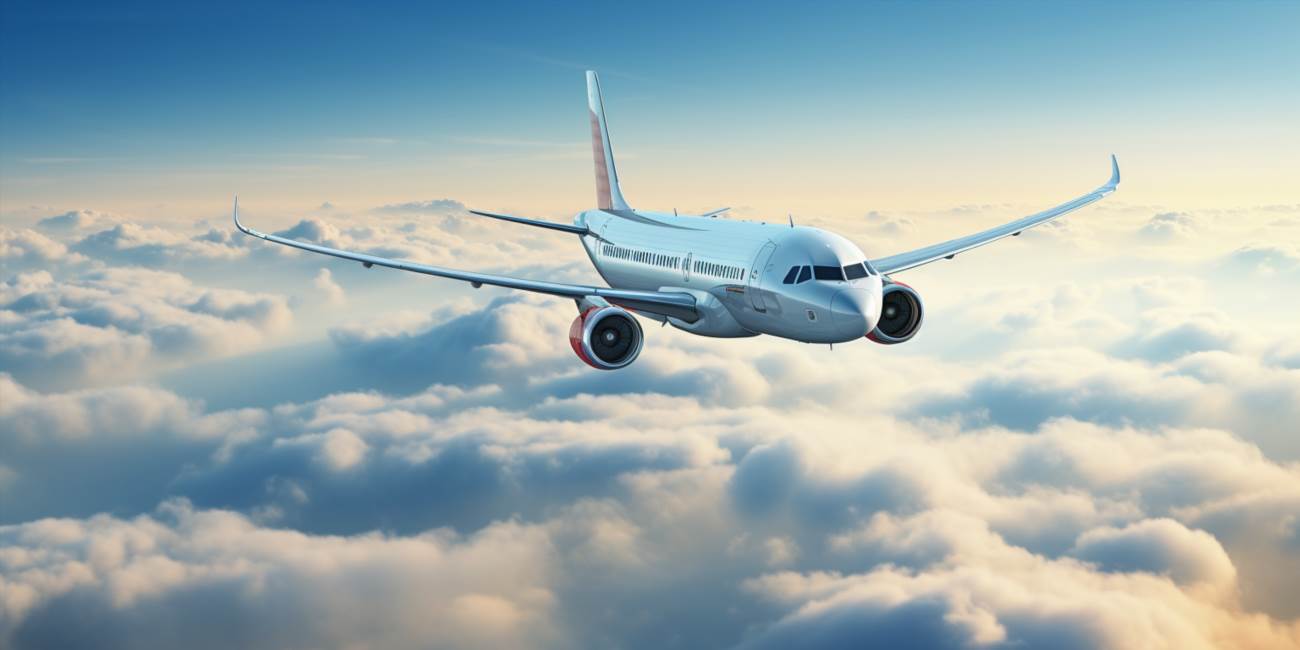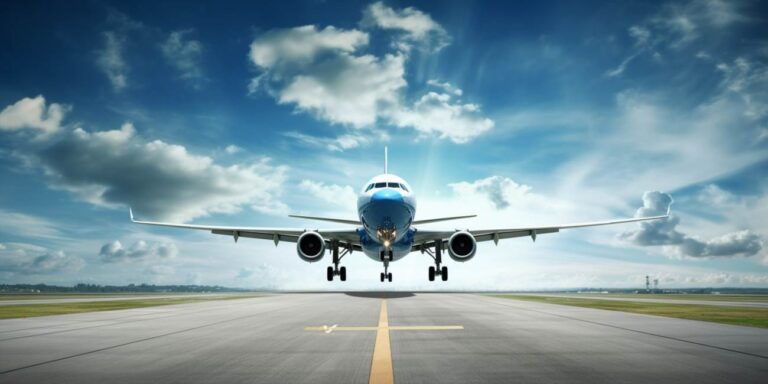Imagine your smartphone, tablet, or laptop as a chatterbox in a crowded room. In regular scenarios, these devices constantly communicate with cellular towers, Wi-Fi networks, and Bluetooth devices, creating an electronic symphony of connectivity. However, once you step onto an aircraft, this harmonious melody transforms into a potential cacophony of interference.
Airplanes, equipped with intricate avionic systems, rely on precise communication protocols. The signals emitted by electronic devices can interfere with the aircraft’s navigation and communication systems. To avoid any potential disruptions, airline regulations mandate the activation of airplane mode during all phases of the flight.
But what exactly does airplane mode do? When engaged, this feature disables the wireless communication functions of your device. It severs ties with cellular networks, Wi-Fi, and Bluetooth, essentially rendering your gadget an isolated island in the electronic sea. This isolation is pivotal, as it prevents your device from emitting signals that could disturb the delicate electronic dance within the airplane’s systems.
Let’s delve into the specifics of why airplane mode on a plane is crucial. The primary concern lies in radio frequency interference. The avionic systems on an airplane operate on specific frequencies to ensure seamless communication. External signals from devices operating at different frequencies could lead to disruptions, potentially jeopardizing the safety of the flight.
Consider airplane mode as a technological curtain drawn between your device and the aircraft’s communication infrastructure. This curtain ensures that your device’s transmissions do not inadvertently join the aerial conversation between the airplane and air traffic control. It’s a precautionary measure to maintain the integrity of the communication channels critical for a safe and smooth flight.
To put it simply, airplane mode is not just about being a good fellow passenger; it’s a matter of aviation safety. The aviation industry prioritizes the cautious approach of minimizing potential risks. Hence, adhering to the airplane mode directive is a responsible act that contributes to the overall safety and efficiency of air travel.
Using airplane mode correctly on airplanes
Traveling by air can be both exciting and sometimes challenging, especially when it comes to using electronic devices. One common feature that passengers often utilize is airplane mode. It’s not just a simple switch; there’s an art to using it correctly to ensure a smooth and uninterrupted journey.
Firstly, it’s crucial to understand the purpose of airplane mode. When activated, this feature disables all wireless communication functions of your device, including cellular, Wi-Fi, and Bluetooth. This is mandatory during takeoff and landing, as it prevents potential interference with the aircraft’s communication systems.
Before you even board the plane, make it a habit to enable airplane mode on your device. This not only helps the cabin crew but also saves your device’s battery life. Once on board, the cabin crew will typically make an announcement to remind passengers to switch their devices to airplane mode. It’s a small but essential step for the safety of the flight.
Now, let’s delve into some specific scenarios. If you’re a frequent traveler, you might have experienced that brief period when the aircraft reaches a certain altitude, and passengers are allowed to use electronic devices. This is the perfect time to disable airplane mode and connect to the in-flight Wi-Fi, if available.
Remember, though, to respect the rules of the airline. Some may allow you to use certain functions while others don’t, even if airplane mode is turned off. Always check with the cabin crew or the airline’s guidelines to avoid any inconvenience.
Another noteworthy point is that airplane mode isn’t just for smartphones and tablets. Laptops and other larger devices should also have their wireless functions disabled during critical phases of the flight. It’s a good practice to double-check and ensure that all your electronic devices comply with the airline’s regulations.
For those who can’t resist taking photos from the plane window, here’s a tip: airplane mode won’t hinder your camera function. You can still capture those breathtaking views without affecting the aircraft’s communication systems. However, be considerate of your fellow passengers and the cabin crew.
Potential dangers of active phone signals mid-flight

Amidst the clouds and the hum of engines, the modern air traveler is surrounded by a world of connectivity, with electronics seamlessly integrated into every aspect of the journey. However, lurking within this technological marvel lies a potential menace – the specter of interference.
As passengers settle into their seats, engrossed in the glow of their personal devices, little do they realize the intricate dance happening behind the scenes. The fuselage of the aircraft becomes a battleground where signals from myriad electronics devices collide and intertwine, giving birth to the looming threat of interference.
Picture the pilot in the cockpit, navigating the skies with precision instruments that rely on unblemished communication. Any hint of interference can disrupt this delicate symphony, casting a shadow over the safety of the entire flight. In the heart of the aircraft, where split-second decisions can mean the difference between life and death, the intrusion of rogue signals poses an ominous risk.
The sophisticated avionics in the cockpit are designed to shield against external disturbances, but the relentless march of technology introduces ever more potential points of vulnerability. As passengers nonchalantly use their smartphones and tablets, they unknowingly contribute to the chaotic ballet of signals that could compromise the sanctity of the cockpit.
Regulators and aviation authorities are acutely aware of the perils posed by interference, and stringent measures are in place to mitigate these risks. Yet, the rapid evolution of consumer electronics continually tests the resilience of these safeguards. It’s a high-stakes game where the balance between connectivity and safety hangs in the air.
Consider a scenario where a passenger, engrossed in a movie on their tablet, inadvertently becomes a conduit for interference. The consequences could range from subtle navigational glitches to catastrophic failures in critical systems. The pilot, entrusted with the lives of everyone on board, becomes a hostage to the invisible forces that permeate the cockpit.
While the probability of interference causing a catastrophe remains low, the aviation industry remains vigilant, recognizing that complacency is not an option. Ongoing research delves into the evolving landscape of electronics and its potential impact on flight safety, seeking to stay one step ahead of the unseen dangers.
When it’s safe to use airplane mode on planes
Have you ever wondered about the mysterious realm of airplane mode and when it’s safe to engage during your flight? Understanding the dynamics of altitude and velocity plays a crucial role in determining the appropriate moments to switch to airplane mode, ensuring a smooth and safe journey for everyone on board.
As your aircraft ascends to higher altitudes, the need for passengers to switch their devices to airplane mode becomes more apparent. At elevated altitudes, the electromagnetic interference from electronic devices can potentially disrupt the intricate communication systems of the aircraft. To maintain a secure and interference-free environment, it’s advised to activate airplane mode once the aircraft reaches a specific altitude threshold, typically during the initial ascent and descent phases.
Understanding the velocity of the aircraft is equally important. The transition to airplane mode is not solely about altitude; it’s also about the speed at which the aircraft is moving through the air. During takeoff and landing, when the aircraft is at lower speeds, the impact of electronic signals is more significant. Hence, it’s crucial to engage airplane mode during these critical phases, providing an additional layer of safety and adherence to aviation regulations.
Now, let’s take a moment to appreciate the role of flight attendants in ensuring a seamless in-flight experience. They are not just there to serve snacks and beverages; flight attendants play a vital role in passenger safety. They are trained to observe and manage various aspects of the flight, including ensuring compliance with regulations such as the proper usage of airplane mode. If you ever find yourself uncertain about when to activate it, feel free to ask a friendly flight attendant for guidance.
For a quick reference, consider the following table outlining recommended altitude and velocity ranges for engaging airplane mode:
| Flight Phase | Recommended Altitude | Optimal Velocity |
|---|---|---|
| Takeoff | 8,000 feet | 250 knots |
| Cruising | 28,000 feet | 500 knots |
| Landing | 5,000 feet | 200 knots |






